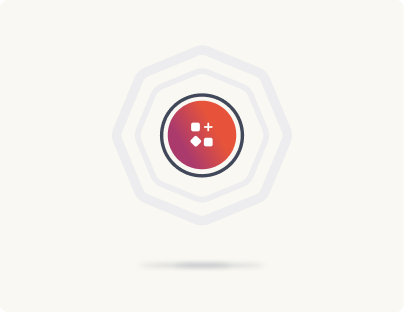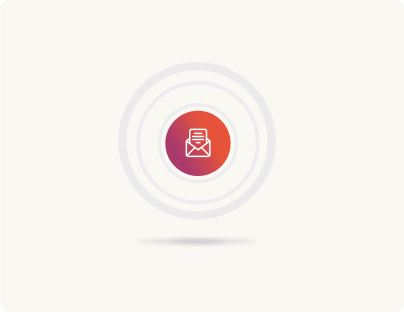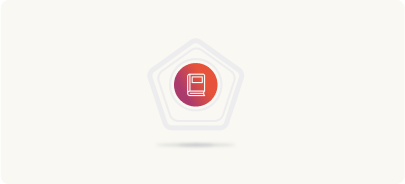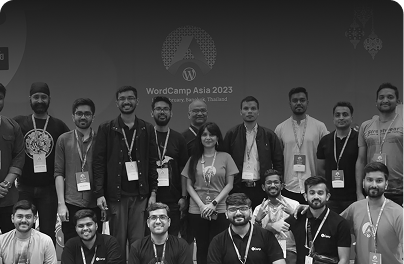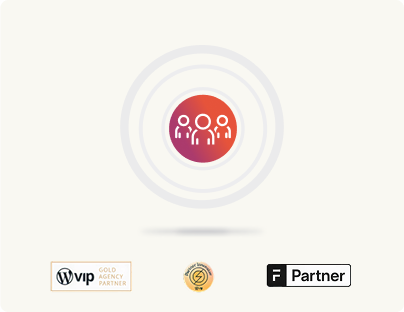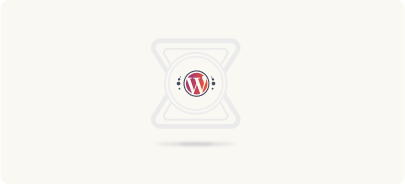rtCamp’s Philosophy & Principles
Headless WordPress is tough to get right.
In the right hands, it’s a powerful solution that can unlock user experiences, achieve business goals, and improve ROI in ways that surpass what can be achieved with traditional WordPress – and therefore the client’s competitors. Yet all too often, Headless WordPress projects end up the opposite: fragile codebases that are more expensive to run, develop, and maintain; lack the essential WordPress functionality; and likely don’t even adequately deliver on whatever business goals “justified” going headless in the first place.
This article provides an overview of rtCamp’s approach to Headless WordPress, covering both the “why”s and “how”s that allow us to consistently deliver successful headless projects while so many others struggle and fail.
Why do (so many) Headless WordPress projects fail?
The key to success at anything is the ability to learn from prior failures. By understanding where others have failed, we can avoid those pitfalls in our own work.
Below are common causes of failed headless WordPress projects:
- When the technology benefits aren’t aligned with specific client goals.
The most common reason for a failed headless project is that the project shouldn’t have adopted headless to begin with . As an expensive-to-implement, actively-evolving ecosystem, you should be able to explicitly justify how Headless WordPress provides is both a sustainable solution for a real-world problem and a better solution versus alternatives.
- When the project’s needs (and costs) are not accurately estimated.
While accurate scoping is important for all projects, the negative impacts of mis-estimation or poor planning are greater for Headless WordPress since solutions can be costly and complex. Hacky workarounds or short-sighted implementation are more likely to compound as tech debt and damage the long-term ROI of a headless project. These are easily exacerbated by external pressures like changing deadlines, missing resources, scope creep, cost overrun, or other project considerations that overincentivise cutting corners.
- When long-term maintenance/maintainability is not factored into the ROI
While similar to the previous point, this deserves a special call-out. The costs and complexities of maintaining Headless WordPress are not the same as traditional WordPress, and must be accounted for.
As during the initial development phase, we don’t want to eat into the budget of projects we maintain because we need to pay the price of a shallow spec or short-sighted engineering decisions. However, since a clear understanding of maintenance requirements factors directly into determining whether Headless is a good project fit, it’s just as important for the sites we hand-off entirely as those we will be maintaining.
- When the team(s) don’t have the adequate knowledge or skills.
It doesn’t matter how clarifying our discovery process is nor how good a match Headless WordPress is for a particular project if the people available to work on a project don’t have the skills to deliver on or maintain them.
- When the team(s) don’t standardize or iterate.
In the current Headless WordPress ecosystem, the hardest and most expensive part of any task is establishing and implementing the pattern the first time. The second hardest and most expensive part is attempting to fix that pattern when something upstream breaks compatibility.
Without a way to reuse our work, capture feedback, or iterate centrally, every part of every project remains high risk, high cost, and high barrier to entry.
How are we different?
rtCamp is uniquely positioned to address the above risks by recognizing and capitalizing on these strengths:
- Good People
We have access to the largest number of highly-skilled WordPress professionals in the ecosystem.
When faced with even the most complex of client problems, there’s usually at least one person at rtCamp who knows how to solve it. Even if there is only one rtCamper with the necessary skills, they only need to solve the problem once for the solution to be captured effectively for reuse.
- Good Work
We have experience with a diverse group of enterprise clients.
With clients working with us on both traditional and headless projects, we don’t need to blindly build solutions in search of a problem. Plus, we can leverage that work experience – ideas, research, and of course actual code- to scale and improve our deliverables on both new and existing projects.
Taken together, we have the ability to break ground and adopt new ecosystem patterns more quickly and efficiently than most teams, and can offset the costs by building for composability and reusability across all different kinds of projects.
By embracing these strengths, we’re uniquely positioned to be at the forefront of the Headless WordPress ecosystem and overcome the challenges that most others struggle with.
Core Principles
To ensure success on all our Headless WordPress projects, we adhere to a set of core principles derived from our collective experiences across numerous enterprise projects and teams. These principles are a mix of axiomatic truths and how we apply our specific strengths in response to them.
1. Use Headless with purpose
Given the current state of the ecosystem, Headless is never the “default” choice. It offers a way to achieve strategic UX/DX goals. However, those opportunities should be concrete and user-aligned.
Therefore, Discovery is the most important part of any potential Headless project. Only with a clear and thorough evaluation can we ensure that Headless WordPress is not just a good solution for a particular project, but the best solution from all possible options.
2. Define clear sources of truths and responsibilities
Headless is premised on the concept of “separation of concerns”, yet some headless sites can be just as – if not more- “coupled” as Traditional WordPress, albeit across potentially different sources of responsibility. We must be equipped to define and understand the various client and technological concerns, so we can make and implement ways to differentiate and manage them independently.
This is just as true when mapping out the site data and repository structures/ deployment strategies, as it is when mapping out the project teams themselves.
3. Document everything
You cannot remember what you’ve never learned. With so many new and unique patterns in Headless WordPress, we’re not just documenting for our future selves, we’re writing for developers, project managers, quality engineers, and others to make sure we continue to evolve, update and institutionalize our knowledge with every project.
There’s no L&D module for Headless WordPress (yet), there’s no official external guides or standardized playbook. There’s this Handbook, the project documentation you generate, and learnings we can glean and extract from those to fuel our feedback loops.
PS: Documentation isn’t just helpful for humans. Context and memory continue to offer the highest ROI on improving the output of current-gen AI models – and no amount of contextual prompting can compete with well-written, project-specific documentation.
ℹ️ Note
AI doesn’t just benefit from documentation – it makes it quick and easy to document code and summarize discussions and decisions. Clarity and conciseness are more important than creativity, so lean into tools like GitHub Copilot for doc-blocks and PR summaries, Google Meet autotranscripts for meeting notes, etc., – just make sure to validate the output of whatever is generated.
4. Be strict about Code Quality
Code Quality is important for all enterprise work, with linters providing guardrails to help ensure your developers – and with growing frequency LLM agents – are shipping quality code, while freeing up seniors to focus on reviewing the things that actually matter.
This is even more important in Headless WordPress – in particular type safety validation, as the ability to maintain separation of concerns rests on the ability to ensure the API contract between WordPress and the frontend remains intact. Typescript and PHPStan are essential tools here, as they can obviate the need for many types of testing and prevent problematic code from ever making it into the codebase.
While projects can start with lax rules and become stricter over time, it usually pays dividends to be as strict as possible from the outset, in terms of maintenance, upkeep, and bug resolution. The ROI here is usually immediately demonstrable during the internal/client-side QA in the form of a reduced number of edge cases or hard-to-replicate bugs, and especially stands out when new developers are introduced to (and need to maintain parts of) the codebase at any point of the project lifecycle.
ℹ️ Note
Here too, AI both benefits immensely and immediately from the improved context, and is very efficient at implementing those same code quality improvements. Whereas in the past the benefit of strict code quality was outweighed by the effort to implement on client projects, modern tooling, AI chatboxes, and autonomous agents make it easy to explain, implement and document, and fix usage violations around the strictest of types.
5. Be consistent(ly opinionated) about standards and formatting
While there are numerous benefits for adopting consistent coding standards on enterprise projects, when it comes to Headless WordPress there’s one reason that matters more than all of the others: It gives developers one less thing they need to adjust to.
When the same set of standards is used across projects it,
- Makes it easier for developers to navigate any codebase.
- Makes it faster for developers to write compliant code for a specific project.
- Makes it faster and easier for code to be reused across projects, and maintained even after long periods of time.
Broadly, rtCamp follows an opinionated adaption of WordPress Coding Standards geared for scalable enterprise projects. However, depending on the team developing or maintaining the project, it may make sense to adjust the the standards and formatting used, guided by the following principles:
- Reuse shared standards. By standardizing around – and then adhering to – patterns that those working on the project are familiar with, you reduce the time of onboarding new developers and the ease in reusing code across projects.
- Be opinionated about autofixable rules. Autofixable rules allow you to spend more time focusing on things that matter. Set these up once and run them on precommit, so developers don’t need to think about it.
- Be strategic about manual rules. While AI makes it easier to understand and remediate rules that cannot be autofixed, code guidelines should exist to aid the developer (or autonomous agent), not generate busywork.
ℹ️ Note
Standards don’t just apply to code, but should be adopted across other parts of the project. Spreadsheets following the same template, documentation living in the same location, GitHub Projects and Issues using the same fields and labels – are all ways to reduce friction and increase portability and ROI.
For more information on applying rtCamp’s recommended Coding Standards to your Headless WordPress projects, see 3.4 Development > Best Practices.
6. Automate your tooling and workflows
Tooling is what frees our minds – and our budgets – to focus on the important parts of a Headless WordPress, and automating that tooling is what frees our calendars.
ℹ️ Note
As of July 2025, rtCamp is still working to create reusable automated workflows, which may limit the options available depending on the host or deployment strategy chosen.
However, most automation scripts are reusable, so investment here can be captured to recoup the costs over future work.
Beyond enabling PR checking and pre-commit hooks to autocheck and fix the aforementioned Code Quality, Code Standard and formatting concerns, we also recommend implementing tooling and automated workflows for:
- Build and deployment for both the frontend and backend.
- API Schema testing against the latest version of environment dependencies (WordPress, PHP, Node, Plugin X, etc) alerts you of potential breaks before they ship to production.
- Visual regression testing is easy to scale and test, and offers the highest level of assurance, for common frontend routes.
- Performance-related reporting such as Lighthouse Scores and Bundle sizes, may help junior developers (or autonomous agents) work better on important enterprise projects that need to “scale”. However, depending on deployment strategy chosen and team composition this may not justify the CI/CD runtime costs.
- Outdated dependency notifications help keep tech-debt from piling up although caution should be taken before implementing auto-updating, as WordPress core and many plugins do not follow Semantic Versioning.
ℹ️ Note
The more tooling (automated or otherwise) used in a project, the safer it becomes to automate other tasks. This is as true for “traditional workflows” like auto-updating dependencies, as it is for AI where tools help ensure the autogenerated code is of higher quality.
7. Reduce, reuse, recycle
While engineers often talk about the benefits of DRY (Don’t Repeat Yourself) and SOLID in terms of development practices, the principles of isolated reusability are critical to all parts of a Headless WordPress project, and are what allow us to scale costs, push innovation, and lower barriers to entry.
- Adopt Composeable Architecture to help enforce your separation of concerns. By limiting the “contact points” between various parts of your code, tech stack, and workflows, you can maintain and fix, and even fully replace something isolated from everything else.
- Reuse rtCamp code libraries, skeletons, and reference other projects as prior art. Better yet, design your own projects to be reusable by other rtCampers, even if that’s just keeping your changes publicly documented in a way that makes it easier for others to backport those changes for you.
- Standardize across tech stacks. Unless there’s a clear and strong benefit to the client from deviating from various internal and external tech choices (plugins, libraries, 3rd-party APIs), choose solutions that we’ve previously used – ideally for Headless WordPress. That improves onboarding time for developers and makes it easy to scale the costs of development and maintenance across projects.
8. Build strong feedback loops
Literally nothing else in this document matters if we’re not explicitly feeding the work we do on individual projects back into the Headless WordPress vertical that we’re scaling. This means ensuring we take the time to:
- Backport code to the skeletons and libraries for reuse.
- File internal issues when we run into trouble, and update the documentation when we figure it out.
- Gather feedback from our teams, developers, and clients on what works and what needs fixing. Retrospectives with various stakeholders are a powerful tool, but informal feedback may be easier to gather, especially when working with conflict-averse clients and coworkers.
- Share your work – before, during, and after you work on it. This allows for potential code reuse and effort deduplication.
ℹ️ Note
On an ideal project, time should be allocated as part of every single task to consolidate learnings and contribute to the feedback loop. In reality when costs and resources are limited, smaller steps can be taken to capture value.
Even a quick message in #x-headless or short internal GitHub issue saying “We did X with Y over on Project Z” provides immeasurable value – at best it allows others to distill and backport that work, and at worst provides an important breadcrumb to help whoever is assigned to the next time-crunched project.
SnapWP – “Headless WordPress” as a progressive enhancement
SnapWP is a prescriptive and applied approach to the above core principles, distilling feedback from across our projects and ecosystem into a composable and reusable library following rtCamp’s best practices for Headless WordPress development.
More specifically, it uses WordPress’s Site Editor as the default source of truth for both data and design. This creates a form of “turn-key” headless WordPress, where a Block-theme powered website looks and behaves identically on traditional and headless WordPress with a minimal amount of boilerplate, and the only custom “headless” development needed are the isolated, project-specific UX/UI needs that justify choosing Headless in the first place.
ℹ️ Note
SnapWP is in early development, and will continue to mature as features are first implemented in client projects. In its current state, it serves as a great boilerplate for building out scalable and maintainable Headless WordPress projects and features, and contains helpful libraries that can be used individually, together, or as prior art for other experimentations.
To learn more about the motivations behind SnapWP, read the announcement post.
